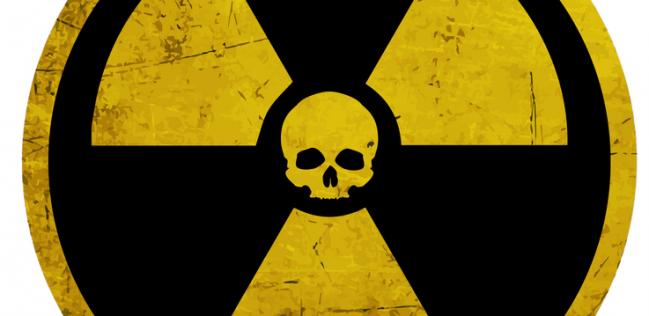Suspended Lead Curtain, Robotic PCI, Offer Significant Head Protection from Radiation During PCI
The use of a suspended lead curtain cut cranial radiation exposure to interventionalists by 97% when compared with traditional protection.

WASHINGTON, DC—The use of a suspended lead curtain designed to shield interventional cardiologists reduced cranial radiation exposure by 97% when compared with radiation exposure experienced by operators who simply used a traditional lead vest during PCI procedures, new research shows.
However, when compared with the lead curtain, operators who performed PCI with a robotic interventional system (Corindus Vascular Robotics) further reduced the risk of cranial radiation exposure by 80%, report investigators.
“It’s always been known that exposure to radiation is dangerous, but my sense is that it’s sort of been taken for granted,” lead investigator Andrew LaCombe, BSc (Michigan State University, East Lansing), told TCTMD. “You’ll see someone walk into the cath lab with no lead on—‘Oh, it’s only a couple of seconds’—and you let them through, but there is an increased awareness about the risks in recent years.”
Speaking at CRT 2017 in Washington, DC, LaCombe cited data published in 2013 highlighting concerns about the lifetime risk of radiation exposure among certain physician specialties. In that survey, researchers identified 23 interventional cardiologists, 2 electrophysiologists, and 6 interventional radiologists with brain and neck tumors, and of these cancers, the malignancy was documented on the physician’s left side in 85% of cases.
“There is data showing that the left side of the head is exposed to about five times the radiation as the right side,” said LaCombe.
In the present study, the researchers, including lead investigator Ryan Madder, MD (Spectrum Health, Grand Rapids, MI), sought to evaluate the effect of a suspended lead ‘suit’ (Zero Gravity, CFI Medical/Biotronik) and robotic PCI system on physician exposure during 336 consecutive PCI cases. Real-time radiation exposure data was collected during manual PCI cases with traditional lead protection (n=123), manual PCI cases using the suspended lead curtain (n=168), and robotic PCI performed in combination with the suspended lead curtain (n=45).
With manual PCI and traditional lead protection, radiation exposure to the head was 14.9 µSv per case. In contrast, radiation exposure using the suspended lead shield alone or the robotic PCI system with lead curtain was 0.5 µSv and 0.1 µSv, respectively. In the study, procedure times were longer with the robotic system (55 versus 45 minutes with manual PCI/traditional lead protection; P=0.02), although fluoroscopy times and radiation emitted were similar in all three groups.
Given the large reductions in cranial radiation exposure with the suspended lead curtain, some might question why the robotic system would even be needed, especially given the cost and learning curve, said LaCombe. He noted that over the course of a career, the difference in radiation exposure between the suspended lead suit and robotic system would be significant, particularly as physicians take on more complex PCI cases, such as chronic total occlusions CTOs).
Speaking with TCTMD, Lorenzo Azzalini, MD (San Raffaele Hospital, Milan, Italy) said interventional cardiologists are “obsessed” with radiation exposure to the patient, but often forget or neglect their own exposure, particularly physicians who have been in practice for a while. To date, large efforts have been made to reduce the amount of radiation operators are exposed to during interventional procedures, but long-term data showing the effects of radiation are “very low quality,” he said.
“There are a few case-control series out there, but we really don’t know what the impact of operator radiation exposure is on the long-term clinical outcomes, especially neoplasms,” said Azzalini.
In 2015, researchers published data suggesting that a two-piece lead drape over the patient and a lightweight, disposable cap worn by the operator—dubbed the No-Brainer cap (Worldwide Innovations & Technologies; Kansas City, KS)—could reduce physician radiation exposure by as much as 70%. In another study, a “real-time” radiation monitor that alerted physicians by beeping in response to radiation exposure during cardiac catheterization procedures also reduced the amount of operator exposure.
“Normally in the cath lab, we’re just annoyed by the beeping, and the techs will just switch it off,” said Azzalini. “But it’s a reminder that we need to be more cautious with radiation exposure.” He added that when he performs CTO-PCI, the fluoroscopy time can range anywhere from 30 to 90 minutes or more.
Although researchers are finally studying the issue, Azzalini said there is still a long way to go. “I would compare the issue [of radiation exposure] today with where we were with stents 25 years ago,” he said. “We’re very behind with research.”
To TCTMD, LaCombe explained that with the Corindus system physicians still must be at the table to gain arterial access and place the guiding catheter within the target vessel, hence the need for the suspension curtain. Just a few weeks back, Madder and colleagues published data showing robotic PCI could be performed by physicians not even in the same room as the patient, one of the preliminary steps toward using telecommunications and robots to do procedures from a distance.
Michael O’Riordan is the Managing Editor for TCTMD. He completed his undergraduate degrees at Queen’s University in Kingston, ON, and…
Read Full BioSources
LaCombe AD. Independent predictors of reduced cranial radiation exposure among physicians performing percutaneous coronary intervention. CRT 2017, Saturday, February 18, 2017, Washington, DC.
Disclosures
- LaCombe and Azzalini report no conflicts of interest.


Comments